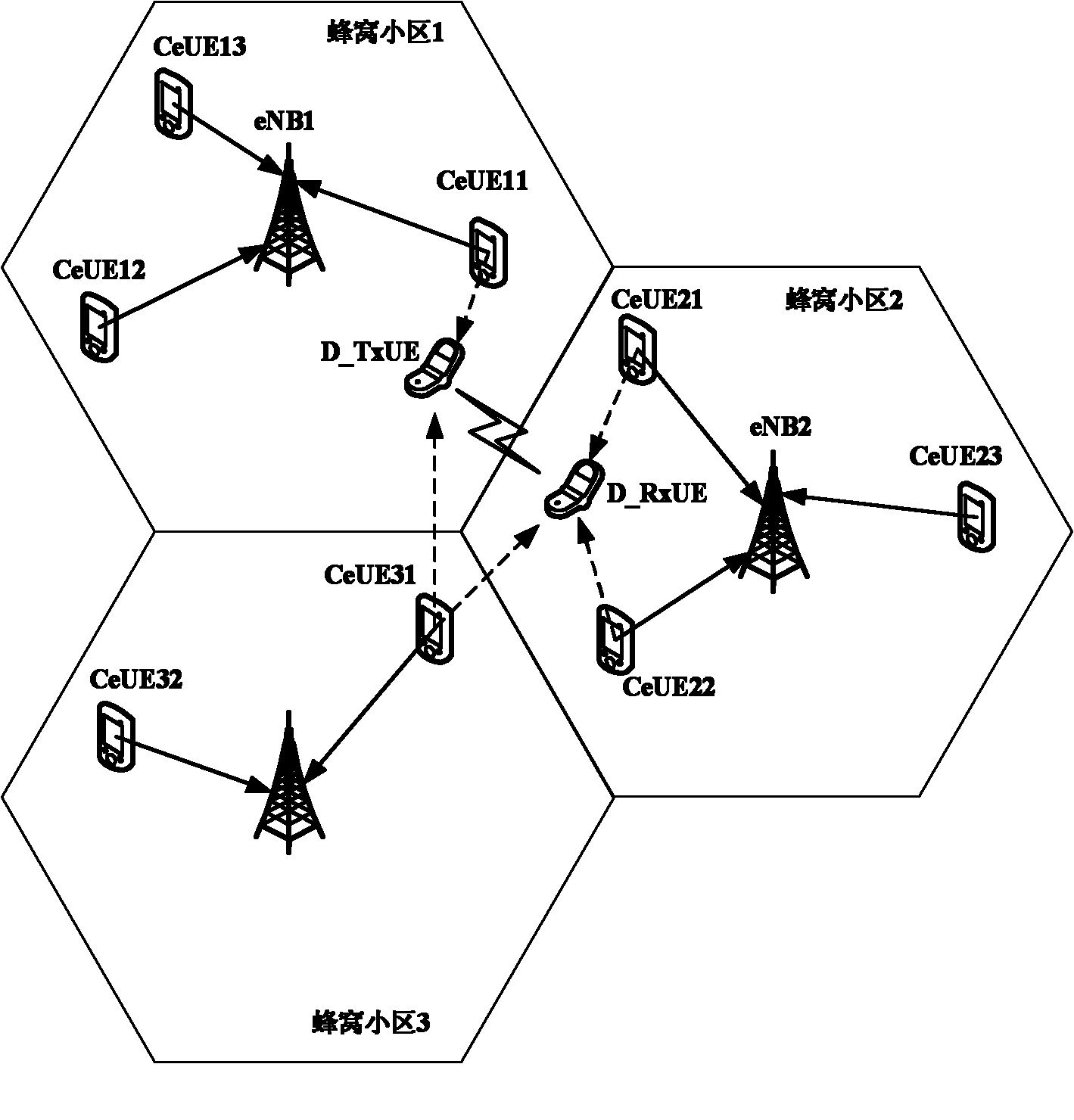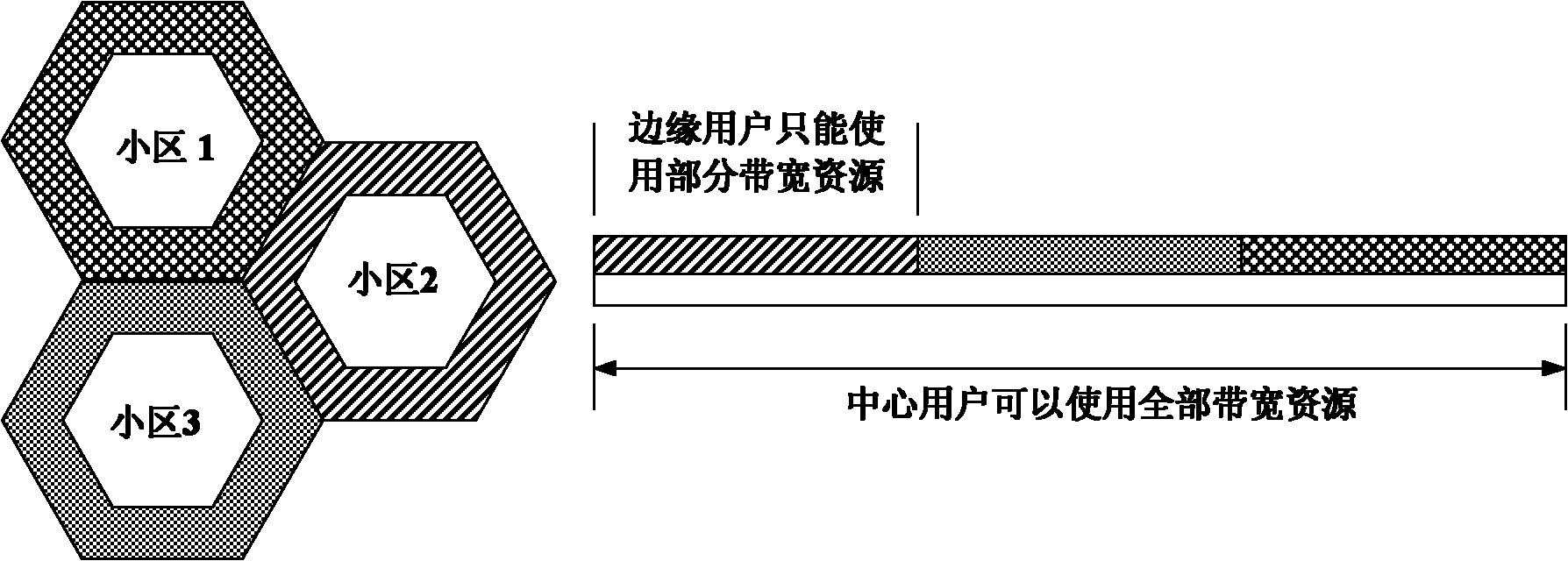Multi-cell interference suppression method between cell and end-to-end hybrid network
An interference suppression and hybrid network technology, applied in network planning, electrical components, wireless communication, etc., can solve problems such as lack of flexibility, limited use scenarios, and inability to coordinate D2D communication resources well, so as to save resources and ensure The effect of communication quality
- Summary
- Abstract
- Description
- Claims
- Application Information
AI Technical Summary
Problems solved by technology
Method used
Image
Examples
Embodiment 1
[0056] Step 101: Cellular users and end-to-end users register with the central controller (eNB) of the cell to obtain the cell ID and power control information of the cell.
[0057] Step 102: Central controllers of adjacent cells exchange information of end-to-end users in their respective cells to determine the cell to which the end-to-end users belong.
[0058] Step 103: Each cellular user monitors the public control channel information broadcast by the central controller, and judges whether it is a cellular user causing communication interference; if yes, execute step 104; otherwise, end the whole process.
[0059] Each central controller broadcasts the information (including time and frequency) of the common control channel (CCCH), so that each cellular user can monitor the information of the common control channel (CCCH). If the signal power of the common control channel (CCCH) information monitored by the cellular user is greater than the set threshold value, and the fre...
Embodiment 2
[0081] In the above-mentioned embodiment 1, the cellular user causing communication interference is equipped with a GPS device. If the cellular user that produces communication interference is not equipped with a GPS device, the present invention can also be realized through the following steps:
[0082] Step 201: Cellular users and end-to-end users register with the central controller (eNB) of the cell to obtain the cell ID and power control information of the cell.
[0083] Step 202: Central controllers of adjacent cells exchange information of end-to-end users in their respective cells to determine the cell to which the end-to-end users belong.
[0084] Step 203: Each cellular user monitors the public control channel information broadcast by the central controller, and judges whether it is a cellular user causing communication interference; if yes, execute step 204; otherwise, end the whole process.
[0085] Step 204: The cellular user causing communication interference de...
PUM
 Login to View More
Login to View More Abstract
Description
Claims
Application Information
 Login to View More
Login to View More - R&D
- Intellectual Property
- Life Sciences
- Materials
- Tech Scout
- Unparalleled Data Quality
- Higher Quality Content
- 60% Fewer Hallucinations
Browse by: Latest US Patents, China's latest patents, Technical Efficacy Thesaurus, Application Domain, Technology Topic, Popular Technical Reports.
© 2025 PatSnap. All rights reserved.Legal|Privacy policy|Modern Slavery Act Transparency Statement|Sitemap|About US| Contact US: help@patsnap.com



